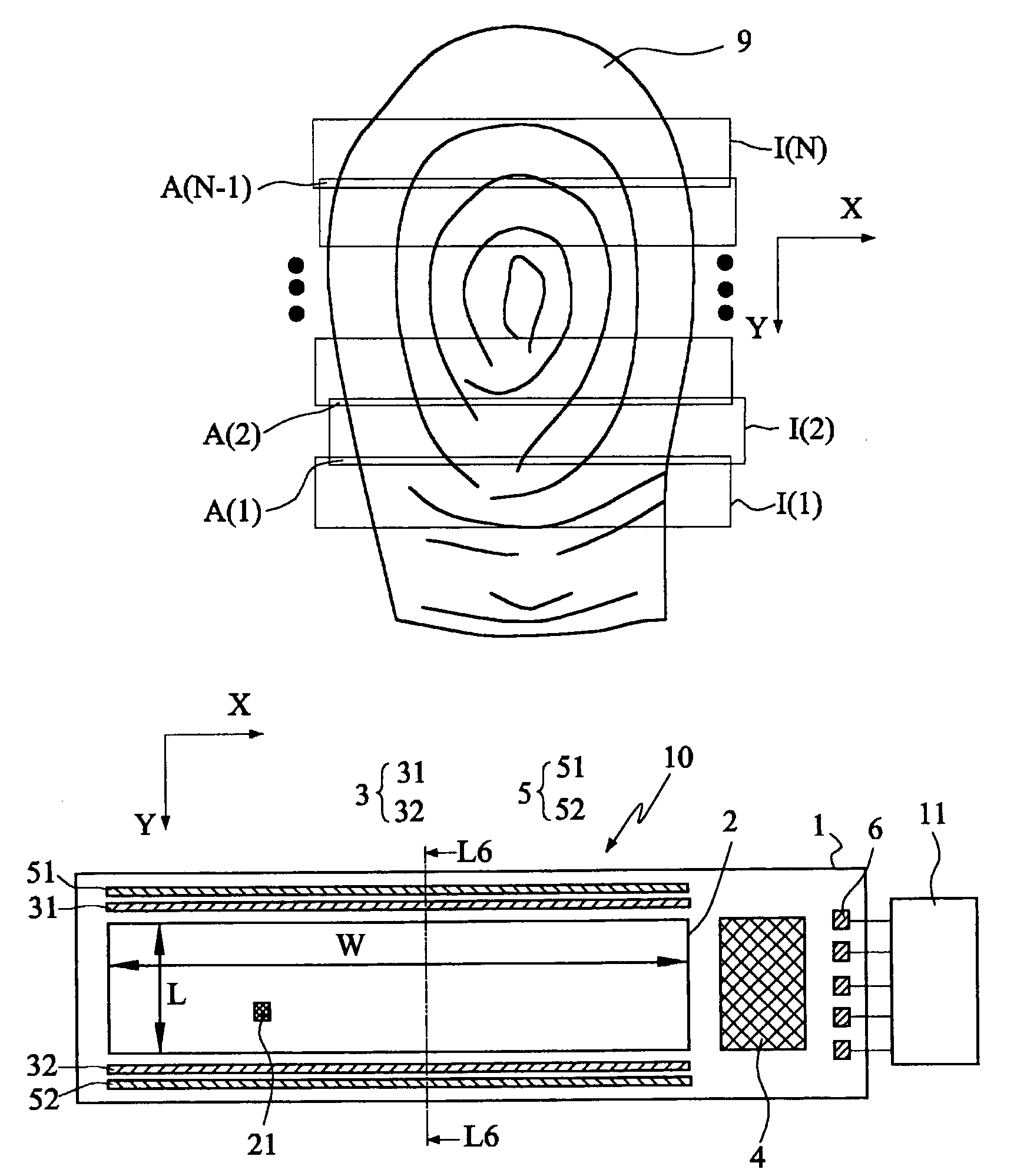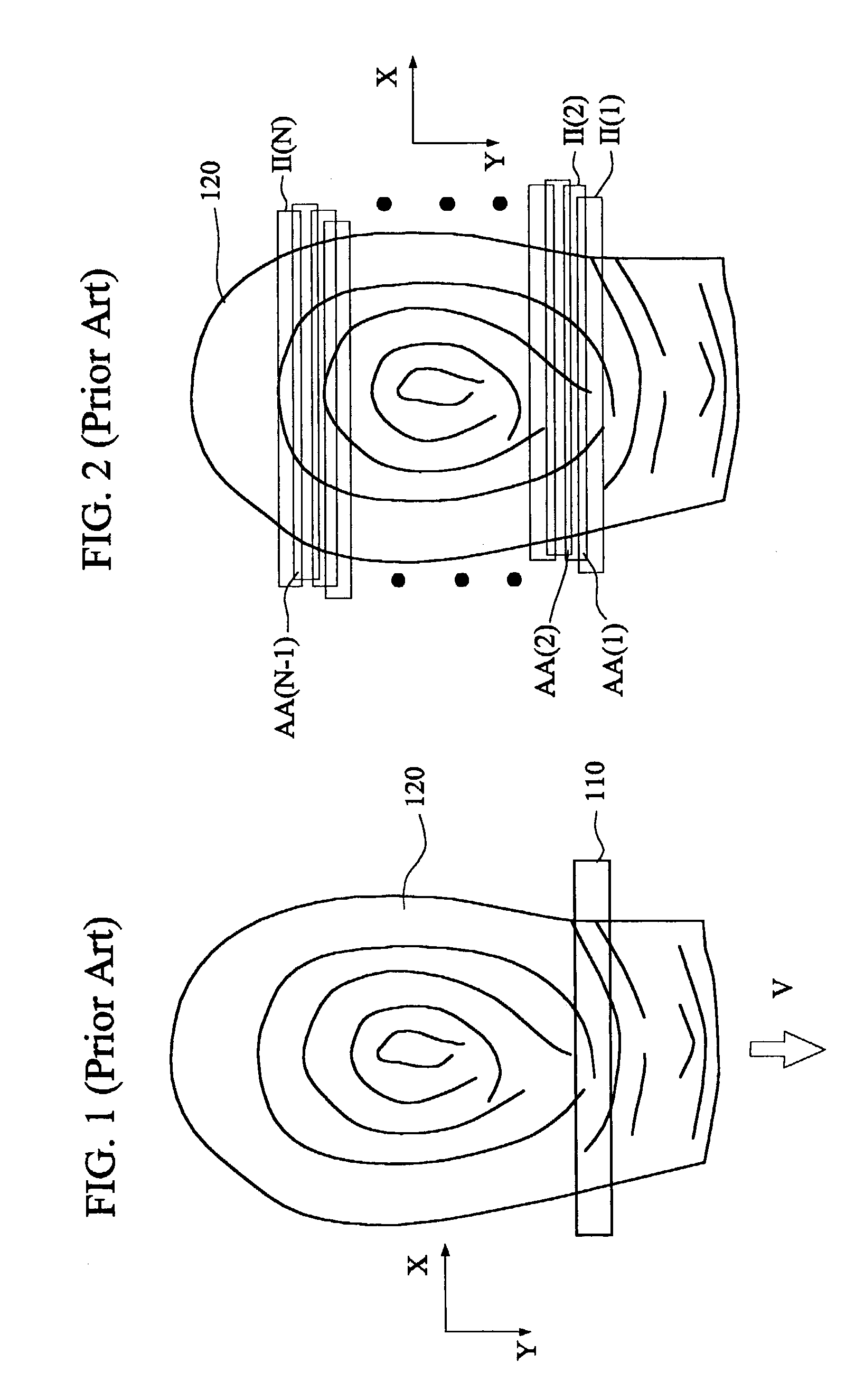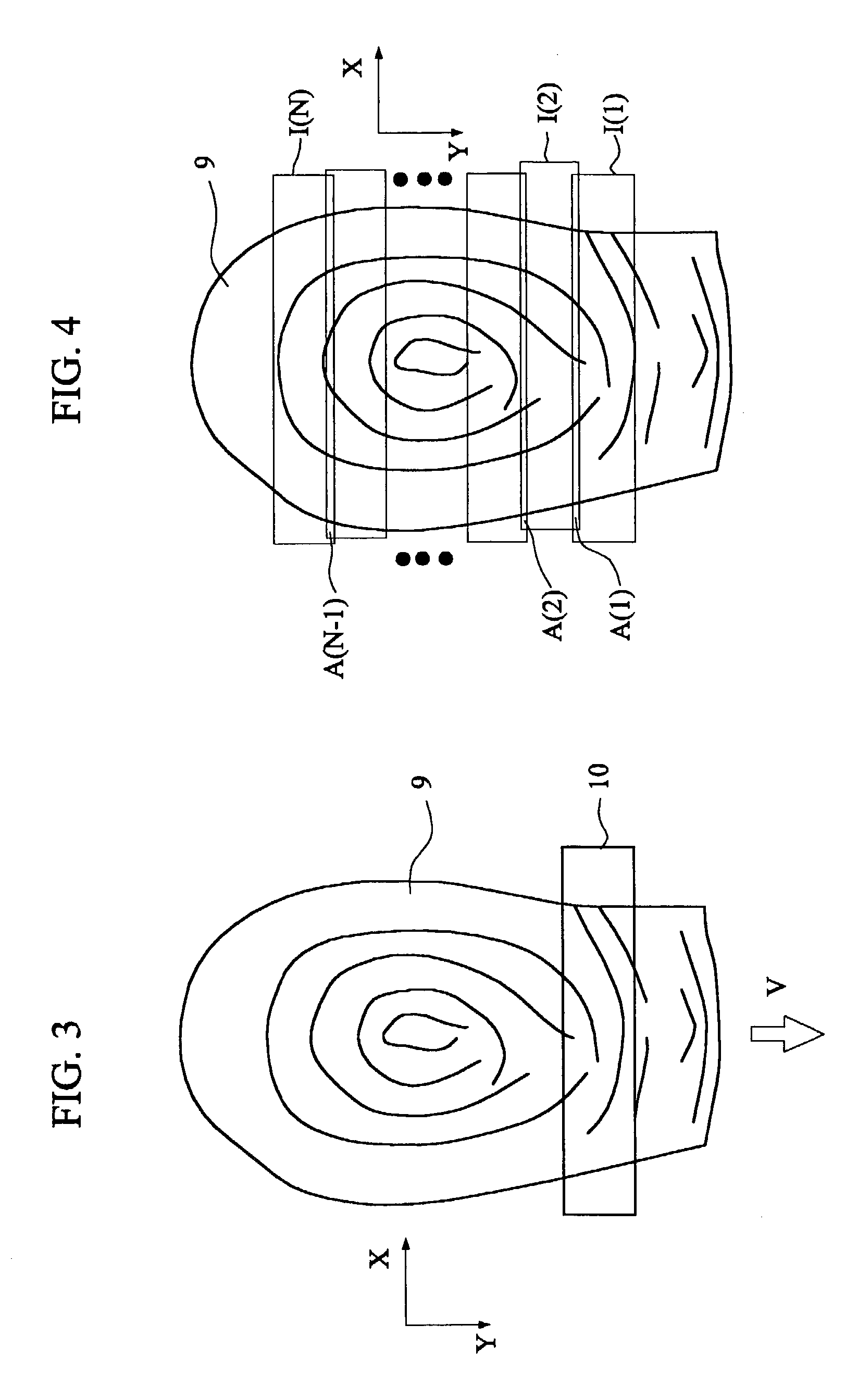Sweep-type fingerprint sensor module
a fingerprint sensor and fingerprint sensor technology, applied in the field of fingerprint sensor modules, can solve the problems of optical fingerprint sensor drawback, inability to meet the requirement of real-time authentication, and inability to process fingerprint identification in real-time, so as to reduce the number of acquired fingerprint fragment images, reduce the cost, and simplify image processing
- Summary
- Abstract
- Description
- Claims
- Application Information
AI Technical Summary
Benefits of technology
Problems solved by technology
Method used
Image
Examples
Embodiment Construction
[0028]FIG. 3 is a schematic illustration showing a finger sweeping across a sweep-type fingerprint sensor of the invention, and FIG. 4 is a schematic illustration showing plural fingerprint fragment images acquired by the fingerprint sensor of FIG. 3. As shown in FIGS. 3 and 4, when a finger 9 sweeps across a sweep-type fingerprint sensor 10 at a speed V, the sweep-type fingerprint sensor 10 helps to detect the speed V of the finger 9, and acquires a plurality of fingerprint fragment images I(1) to I(N) according to the speed V, wherein N is a positive integral. The overlapped regions between adjacent two fingerprint fragment images are A(1) to A(N−1). The invention to be disclosed is suitable for minutia points extraction and matching, as will be discussed later.
[0029]The above-mentioned sensor may be embedded into any platform of any application device. When the finger 9 is placed on the platform and sweeps along the direction indicated by the arrow, the sensor 10 may sequentially...
PUM
 Login to View More
Login to View More Abstract
Description
Claims
Application Information
 Login to View More
Login to View More - R&D
- Intellectual Property
- Life Sciences
- Materials
- Tech Scout
- Unparalleled Data Quality
- Higher Quality Content
- 60% Fewer Hallucinations
Browse by: Latest US Patents, China's latest patents, Technical Efficacy Thesaurus, Application Domain, Technology Topic, Popular Technical Reports.
© 2025 PatSnap. All rights reserved.Legal|Privacy policy|Modern Slavery Act Transparency Statement|Sitemap|About US| Contact US: help@patsnap.com



